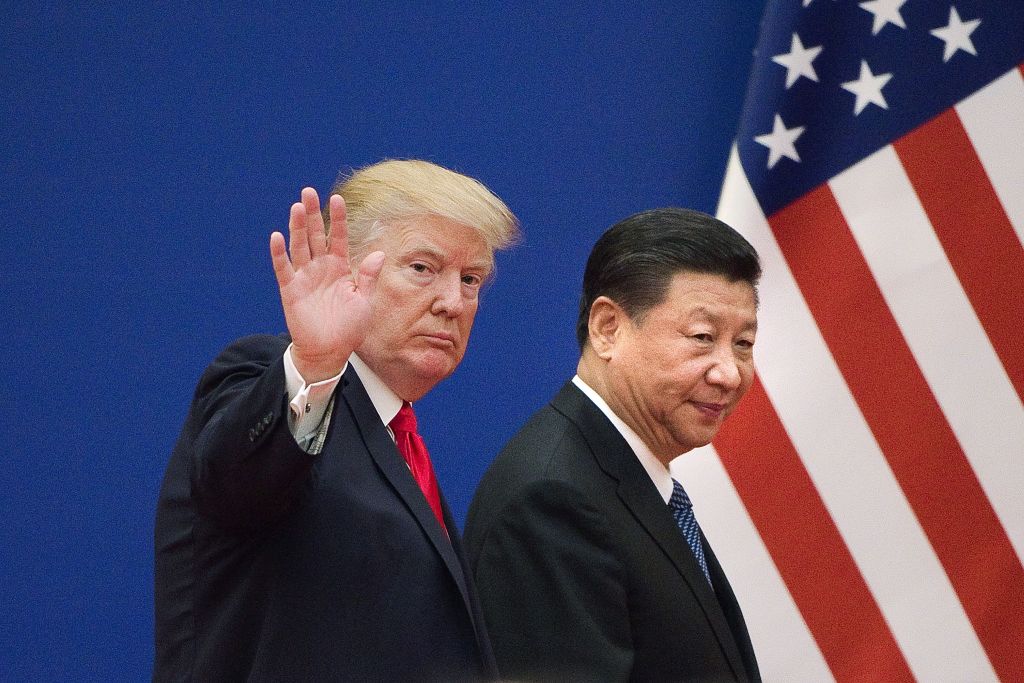Although China’s economy remains smaller than the United States’s in terms of nominal GDP (albeit ahead of the US in terms of GDP on a purchasing power parity basis) has it already surpassed it in another sense? Since 2008, China’s energy and momentum has arguably led to it overtaking its rival. A hundred years from now, historians are likely to look back at the financial crash as the turning point in the balance of power between the West and China.
The sub-prime mortgage crisis of that year, followed by President Obama’s high-tax, over-regulated economic management, saw America cast into a prolonged recession and an anemic recovery. At the same time, the US had dissipated financial and military strength as well as diplomatic credibility on President Bush’s wars in Iraq and Afghanistan which, at best, only brought marginal benefits. As the West reeled, the Chinese economy bounded ahead.
While Bush’s wars brought little benefit, America has also been damaged by stark domestic divisions. Over the last 20 years, the Democratic party has moved to the far left, channeling the postmodern (neo-Marxist) political philosophies of Jacques Derrida, Michel Foucault and Roland Barthes into policies of social and economic deconstruction focused on gender, race and the environment.
Meanwhile a combination of evangelicals and the ‘fly-over’ citizens of middle America, the ‘left-behinds’ of globalization, turned in exasperation to the nationalistic, free market agenda of the idiosyncratic media showman, Donald Trump, who promised to reverse the de-industrialization of the United States — policies that were gaining traction until the arrival of COVID-19. International commentators look on divisions in the US with incredulity and no less so at the choice of their presidential candidates, not least the Democratic party’s aged Joe Biden, a man with obvious declining faculties.
The Chinese do not just think that a dysfunctional and fiercely divided US is in decline: they know it is. The European Union, whose emphasis on political union is noticeably not used as a model by ASEAN (Association of South East Asian Nations), is similarly at war with itself. Ten years ago, a Chinese businessman boasted with regard to Europe, ‘Yesterday we ate your breakfast. Today we are eating your lunch. Tomorrow we will eat your dinner.’
Former staunch American allies in Asia have gone with the flow. During the weak Obama presidency, Thailand and the Philippines, a former US colony, placed themselves decisively in the Chinese camp as the US gave up control of the South China Sea, the world’s busiest trading route, with barely a whimper. In spite of America’s then 11:1 superiority in aircraft carriers President Obama failed to contest China’s occupation of the Paracel and Spratly Islands.
Fast becoming a Chinese hinterland, ASEAN (the Association of South East Asian Nations) containing a Chinese diaspora estimated at 50 million people, have an aggregate population of 650 million. Their collective GDP will surpass that of the European Union (population 446 million) within five years. In addition, China’s New Silk Road strategy has brought Central Asia, Turkey and Russia under its thrall. Chinese political and economic influence in Africa is also well advanced.
China’s global reach will be further advanced by this week’s signing of the Regional Comprehensive Economic Partnership (RCEP), which draws ASEAN’s 10 countries together with China, Japan, Australia, South Korea and New Zealand. Noticeably Europe and America are not included. With India backing out of RECEP, China stands head and shoulders at the top of the world’s largest free-trade organization.
[special_offer]
Technologically the West is beginning to fall behind too. In 2018, China accounted for 46 percent of global patent filings; their 1.5 million applications dwarfed the 597,141 patents filed by the US. Although the US still lead in microprocessor technology it has to be questioned how long that will last. In artificial intelligence, it is forecast that China will overtake the West over the next decade. Ironically it is America’s tax-privileged private equity groups that are beating a path to China’s rapidly expanding tech centers in order to fund start-ups and rapidly expanding young companies. Nowhere is this transformation more evident than Shenzhen; the city, a small fishing village adjacent to Hong Kong when Deng Xiaoping designated it a Special Economic Zone in 1980, is now a conurbation of 13 million people whose growth is outpacing Hong Kong thanks to technology behemoths such as Tencent and Huawei.
COVID-19 has accelerated the pace of the West’s relative decline. RECEP has further speeded up that trend to the point that the question that needs to be asked is not ‘When did China overtake the West?’, it is ‘When will the Chinese economy become so dominant that the US and Europe will have to kau tau to Xi Jinping’s imperial successors?’
Unless the West gets its act together by relearning capitalism and developing a coherent and united geopolitical purpose, expect that moment this century. A world of Chinese supremacy, not parity, will become what can best be described as the ‘old’ normal — a world that would have been familiar to Europe and America in the 18th century when China’s economy was far larger than the US and Europe combined.
This article was originally published onThe Spectator’s UK website.


















